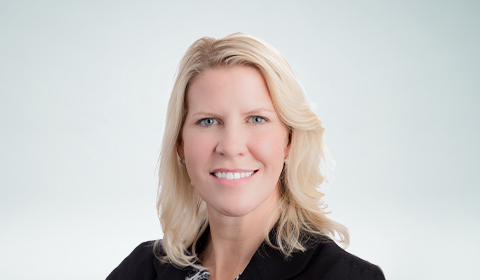People worldwide are living longer than at any time in modern history, but lifespan does not necessarily equal "healthspan".
RGA's Global Eldercare Survey of 86 major life and health insurers from around the world suggests insurers are determined to empower more people to enjoy active, healthy, technology-assisted later years through chronic illness prevention and management, improved disability management, and mobility assistance.
RGA interviewed survey sponsor Carmela Tedesco, Vice President, Business Initiatives Lead, RGAX Americas Innovation, and Leigh Allen, Associate Vice President, Strategic Survey Research, to discuss results spanning multiple markets, across the Asia-Pacific region, Europe, the Middle East and Africa, the U.S. and Canada, and Latin America – and to explore the ways insurers are working to make happy, healthy aging a reality.
Download Survey Results
RGA’s eldercare survey found that more than two-thirds of insurers globally were currently offering eldercare solutions. That’s a remarkable number given the unique risks facing the elderly, from dementia to disability. Can you explain those findings?
In many ways, this result makes perfect sense. The share of the population aged over 65 in developed countries is expected to nearly double by 2050. This is a massive market. In many countries, retirees do not want to leave their homes and communities to go to retirement or nursing homes. For others on fixed incomes these group-care solutions are not an affordable option. So, it should be unsurprising that 40% of insurers in RGA’s survey reported a focus on “financial health/aging in place” or helping policyholders maintain financial and physical independence longer.
More than 30% of respondents also focused on preventative health and screening and 19% on chronic disease management. The goal is to help the elderly stay in their homes longer – and out of long-term care – by better managing chronic and cognitive conditions, preventing debilitating injuries, and maintaining good quality of life.
A quarter of insurers reported a focus on improving “quality of life” by addressing social isolation. Has the ongoing pandemic influenced these results?
Social isolation has been a growing concern for years, but lockdowns and social distancing requirements reinforced the vulnerability of many seniors. RGA’s survey was conducted mid-pandemic, with a rolling implementation from August 2020 through January 2021. So, the results reflected insurers reactions to this crisis and its impacts on the elderly.
There was a remarkable plurality: COVID-19 prompted insurers worldwide to prioritize homecare, teleconsultations, and tele-medicals. Carriers needed to reach policyholders who may have been suddenly cut off from traditional social supports or regular care. Most promoted a spectrum of in-home services, with 44% supplying some virtual medical services. Insurers also developed smartphone apps focused on general health – cognition, mobility, well-being. And about a quarter of respondents offered technology or tools to support remote check-ins by caregivers or family members and to reduce isolation by facilitating socialization. One can only imagine that the spread of COVID-19 through individuals in some group-care settings only reinforces this effort.
And yet, for all this talk of health-tech and home care, when most insurers were asked to identify product development priorities, most were familiar.
As expected, savings products or annuities led in the senior products category, followed by medical insurance, AD&D, estate planning, and final expense or funeral cover.
The American Council of Life Insurers predicts that by 2030, annual U.S. nursing home expenses could triple the size of today's industry, and similar outsized costs can be seen within “super-aging” societies from Japan and Korea to parts of Europe. So, it’s not surprising that there is intense interest in financial products. After all, most of us have a well justified fear of outliving our savings. Insurers are acting accordingly: savings and annuities products comprise about half of new launches. That’s followed by medical insurance.
RGA noted a trend around some untapped or under-realized opportunities. We may expect to see more products built around enabling financial health or aging in place, long-term care, health and wellness, caregiver benefits, and dementia management, for example.
The survey also suggests that insurers do not think about older-age policyholders as a single monolithic group.
We see a high degree of customer segmentation. More than half of insurers globally segment seniors within retiree groups. Insurers attribute the lowest underwriting risk to pre-retirees, followed by retirees, and then impaired lives or individuals with chronic conditions such as diabetes and heart disease. Other targets include young adults who can buy for their parents. Respondents saw multiple opportunities in new segments. In particular, they identified medical insurance for elders, family policies, estate planning, and forms of long-term care (LTC).
Earlier you mentioned caregiving and it feels as though this is an untapped market. Are caregivers of the elderly underserved, too?
Insurers are pursuing products for caregiving support, mainly focused on respite care and help with care duties. But when we look at the top three distribution channels worldwide – bancassurance, agents and brokerages or brokers – we see a clear direction. Financial products outperform. In contrast, caregiving products are much less frequently offered and tend to perform below our respondents’ expectations.
Globally, life expectancy rates are increasing. This is opening doors of opportunity for more technology and product innovations.
That’s surprising given how overwhelmed caregivers are. We hear so much about increasing age dependency ratios. Then there’s the burden facing the working age population as family members live longer, but in a state of poor health.
Well, when we asked insurers to identify their top market barriers, 44% citied low interest or demand and product design difficulties. Another 36% pointed to distribution challenges, and 32% referred to low return on investment. So, one takeaway could be that there likely are a combination of factors impeding successful caregiving product design and delivery. Bottom line, the senior market is difficult; so is the caregiving market. A true balancing act is required to produce effective and meaningful offerings that are also profitable and affordable.
Speaking of difficult, let’s talk about risk assessment. How do insurers assess risk, and how are these senior products underwritten?
First, understand that very often older-age consumers view coverage as unaffordable or the application process appears to be prohibitively complex. Insurers know this. When we asked survey participants to rate their top challenges for market penetration and sales, lack of affordability rated number-one. Product design was ranked as the second greatest challenge. Underwriting and anti-selection were also concerns.
But, when we asked what underwriting methodology was in use to support senior health and care products, 50% offered some form of simplified underwriting that also included a health questionnaire, and 41% issued fully underwritten policies. Only 28% had limited underwriting and zero offered guaranteed issue. That’s why, in many markets, seniors are covered as existing policyholders through issue-age expansion clauses up to 65 years or 70 years.
Insurers do not appear to be content with this status quo. Many noted increased focus on closing the so-called “senior protection gap” by simplifying the underwriting process through use of data analytics and identifying healthy individuals at older ages who might qualify for a preferred rate.
Risk should advance with age, right?
Correct. Also while we know that cognitive decline is a significant risk, the standard ADL (Activities of Daily Living) test for cognitive functioning was not in widespread use and only just over half of global participants reported incorporating any form of cognitive diagnostics into the underwriting process. Similarly, while three-quarters of respondents shared interest in exploring cognitive assessment tools to predict impairment or dementia and incorporate these into actuarial pricing models, only 3% reported doing so currently and 9% are actively developing these tools.
So, if better data is the key to better underwriting for the senior market, how do insurers plan to acquire this data and use it?
This is the problem insurers are looking to solve for underwriting and product development in the future. Digitals and wearables are the path but have low penetration. About 18% of insurers reported deploying digital devices or wearables to senior policyholders for biometric data like weight, blood pressure, physical activity, heart rate, sleep, or, of course, activities of daily living.
What’s holding insurers back? Most cite privacy issues, regulatory constraints, or anti-selection concerns. Interestingly too, participants in the survey placed less emphasis on the use of data and analytics to reduce claims, improve customer engagement, or even improve health impacts.
There’s an increase in demand for digital accessibility in the senior market to improve health and capture data, in this vulnerable population.
It sounds as though partnerships could open some doors.
Partnerships are less common in the senior market than in other segments, and yet in our survey 44% of participants expressed some interest, and 41% reported being actively partnered with a third-party or technology company. For example, our own RGAX has established a reputation as a transformation partner in the life and health space, connecting carriers, distributors and technology companies with resources and insights to drive change and optimize operations, and eldercare and aging is an area of specialty.
Most survey respondents look to reinsurers for underwriting support, product development guidance, partner evaluation and selection (including technology), and data evaluation and selection.
Download Survey Results
RGA’s Global Eldercare Survey reveals that for many insurers, the aging populations are no longer viewed as a difficult segment but as a target market that is ripe for innovation and development. Data and analytics reveal many variations in risk and introduce opportunities for immense product innovation throughout the insurance value chain, from underwriting through claims. Aging is inevitable, but with good cognitive and physical health, it can be joyful.
Curious about RGA’s global survey results? Download Survey Results.



